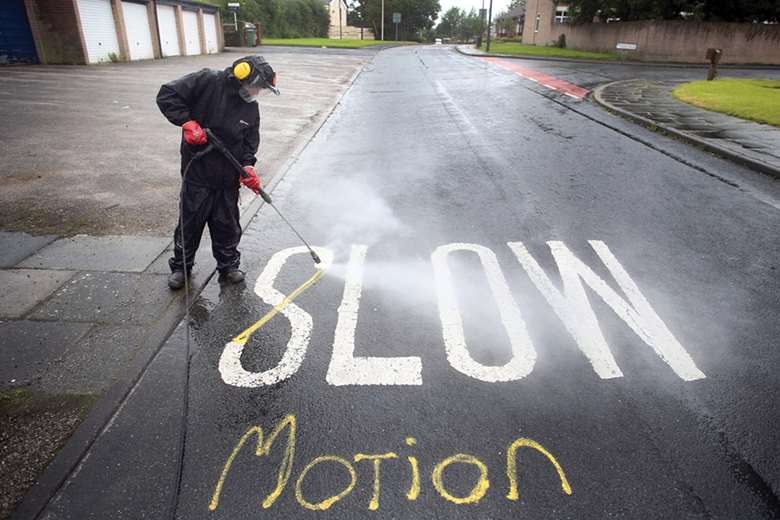How cleaning graffiti keeps teens clear of crime
Jo Stephenson
Tuesday, April 1, 2014
Young offenders in Halton have turned a punishment to clean up graffiti into a viable service.

Project: Youth Graffiti Solutions
Purpose: To divert young people away from crime
Funding: Initial funding from the Community Space Challenge plus £42,000 from Catch22 and the Big Lottery Fund, and funding for apprenticeships from Halton Council
Background: Removing graffiti was seen as a way young offenders in Halton could repair some of the harm they had caused in their local community. But when Halton Borough Council's own graffiti removal team was disbanded, the local youth offending team saw an opportunity to create a full-fledged service.
Action: The graffiti removal project started working with local police, fire and community safety teams, town centre management, environment and planning departments, parks services and residents' forums to create a referral system that would identify and report graffiti directly to the team. Thanks to extra funding from Catch22 and the Big Lottery Fund, they went on to establish a micro-enterprise with the new title Youth Graffiti Solutions.
It is now run by Cheshire West, Halton and Warrington Youth Offending Service in collaboration with Cheshire Probation Trust, Community Payback and Halton and Warrington Youth Club's Canal Boat Adventure Project. It has a presence at the youth club's Skills Bank.
It works with a mix of young people on court orders and those at risk of being drawn into crime, who not only learn practical skills but the communication, organisation and planning involved in running a business, supported by two youth offending service workers. On "graffiti removal Wednesdays", the young people go out and about all day removing graffiti and chewing gum. On Mondays, they may do some practical work, but also undertake office tasks such as setting up the jobs and paperwork.
The ultimate aim is to make the project into a self-sustaining not-for-profit social enterprise, explains project manager Chris Sweeting, who has seen it help turn around young lives. "It gives them a skill and sense of ownership of their community," he says. "If young people are involved in cleaning up and looking after their community, they are more likely to go on doing that in the future." Last summer the project gained two apprentices, who are excellent role models for others on the scheme, he adds.
Outcome: Since June 2010, more than 530 young people have been positively engaged in the project. Of those, 59 per cent were subject to statutory orders, 37 per cent were involved via the Community Space Challenge and a small percentage were from youth offending service prevention programmes, the National Citizen Service or on apprenticeships. By investing in equipment, the team has gone from removing about half the graffiti reported to an impressive 97 per cent.
It has since branched out into chewing gum removal with several schools using the service during the school holidays and recently the team was employed by Halton Council to put up "reverse graffiti" – transfers advertising Halton's Family Information Service.




